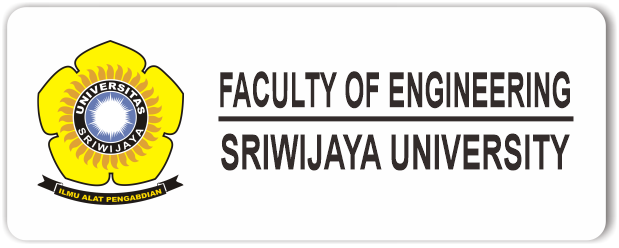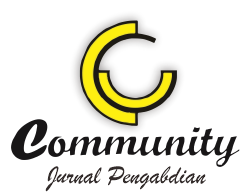Pengolahan Limbah Organik Menjadi Eco Enzyme Sebagai Pupuk Organik dan Desinpektan Bagi Warga Desa Pegayut dan Sekitarnya
Abstract
ABSTRAK: Program pengabdian masyarakat ini didasari oleh keprihatinan dan kepedulian untuk mengatasi banyaknya limbah organik dan rumah tangga yang belum termanfaatkan secara optimal. Kegiatan ini diselenggarakan di Desa Pegayut dan berlokasi di SMKN 1 Pemulutan.Pada tahap pengujian awal dilakukan pembuatan eco enzyme dengan campuran limbah kulit buah dan sayur sebanyak 300 gram, molase 100 gram dan air bersih sebanyak 1000 mL. Perbandingan campuran kulit buah dan sayur yang digunakan sebanyak 1 : 1, 1 : 2 dan 2 : 1 sehingga menghasilkan 3 variasi eco enzymeA, B dan C. Setelah proses fermentasi selama 3 bulan, dilakukan pengambilan produk dan hasil pengujiannya menunjukkan bahwa eco enzyme A yang lebih bagus dimanfaatkan sebagai pupuk organik sedangkan eco enzyme B lebih baik sebagai desinfektan. Proses pembuatan dan hasilnya ini selanjutnya disampaikan melalui kegiatan penyuluhan dan praktek kelompok yang diikuti 49 peserta baik siswa, perwakilan warga maupun guru. Dari keseluruhan peserta terdapat 42 peserta (86 %) yang mengisi kuesioner umpan balik. Data umpan balik tersebut selanjutnya dianalisis dengan menggunakan skala penilaian 1-5 terhadap 5 aspek yaitu format kemasan acara, penguasaan materi pembicara, manfaat kegiatan, dampak peningkatan kompetensi peserta dan rencana tindak lanjut. Skor pembobotan masing-masing kriteria sebesar 4,76 ; 4,86 ; 4,88 ; 4,74 dan 4,5 sehingga nilai rata rata yang diperoleh sebesar 4,75. Hal ini menjadi indikator bahwa kegiatan pengabdian ini mendapat respon positif dan akan ditindak lanjuti oleh pihak sekolah dengan mengimplementasikannya melalui Proyek Penguatan Profil Pelajar Pancasila (P5) SMKN1 Pemulutan. Kata Kunci: Eco enzymes, limbah organik, pengabdian masyakat, molase ABSTRACT: This community service program is driven by concerns and a commitment to address the abundance of unutilized organic household waste. Proper management of this waste can result in dual benefits, positively impacting the environment and offering potential business opportunities. The program is conducted in the village of Pegayut, located at SMKN 1 Pemulutan. In the initial testing phase, eco enzyme were produced using a mixture of 300 grams of fruit and vegetable peel waste, 100 grams of molasses, and 1000 mL of clean water. The mixture ratios of fruit and vegetable peel waste used were 1:1, 1:2, and 2:1, resulting in three variations of eco enzymes: A, B, and C. After a fermentation process lasting three months, product samples were collected, and the test results showed that eco enzyme A was more suitable for use as organic fertilizer, while eco enzyme B showed better performance as a disinfectant. These test results were subsequently disseminated through counseling sessions and group practices involving 49 participants, including student representatives, community members, and teachers. Of all the participants, 42 individuals (86%) completed feedback questionnaires. The feedback data were analyzed using a 1-5 rating scale across five aspects: event format, speaker's knowledge mastery, the usefulness of the activity, the impact on participants' competence improvement, and follow-up plans. The weighted scores for each criterion were 4.76, 4.86, 4.88, 4.74, and 4.5, resulting in an average score of 4.75. This indicates a positive response and enthusiasm from participants towards the community service program. Furthermore, the school intends to follow up on this community service program by implementing it as part of the Strengthening the Profile of Pancasila Students (P5) Project at SMKN 1 Pemulutan. Keywords: Eco enzymes, organic waste, community service, molasses

This work is licensed under a Creative Commons Attribution 4.0 International License.







